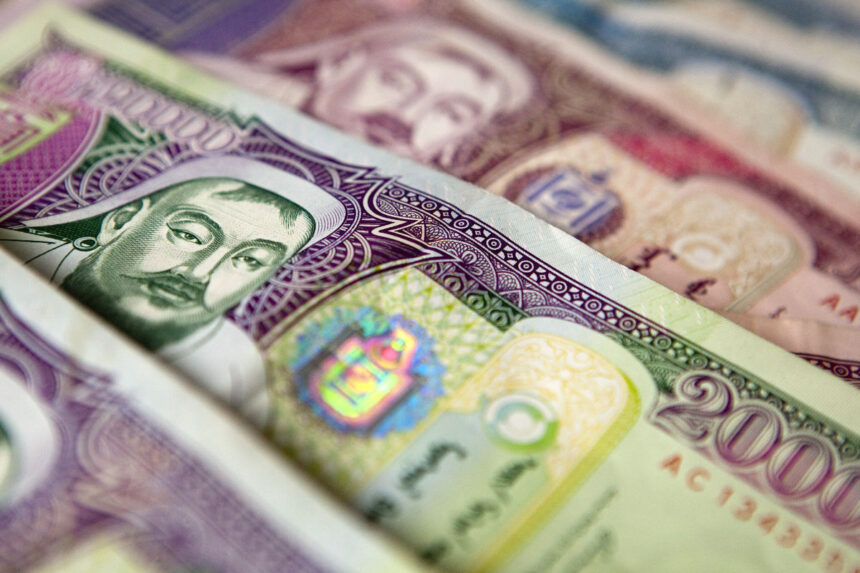The improvement of capacity to buy a foreign currency by a national currency means the national currency had strengthened. If we bought US$1 for MNT1470 as of January 12, 2010, and after eleven months exactly we buy it for MNT1211, it means the Mongolian tugrug has strengthened by 20 percent during this period.
However, inflation jumped by 11% as of first eleven months or the quantity of goods to buy for a certain amount of money has reduced and therefore money lost value by 11%. In a country where the currency is freely convertible, price changes to buy a foreign currency and to buy goods both should move in the same direction and more goods should be bought for a certain amount of money. For instance in Japan, the stronger the currency, then deflation is higher or prices goes down.
But how is it in Mongolia that prices are growing when the tugrug is getting stronger? The reason is that the national currency is not able to stop the price growth, despite the currency getting stronger and stronger. Then why the price is getting so high?
The inflation is enormous. Basically there are four types of inflation in the world, including demand-pull inflation, cost-push inflation, administered price inflation and industrial inflation. In Mongolia these four types are simultaneously taking place at different rates, netting whole inflation.
In Mongolia, economic volume per capita is low, one third of the population is poor and almost one third of consumer goods consists of only five kinds of foods, including meat, flour, rice, sugar and potato. In addition to these goods, the price of energy and petroleum has a remarkable impact on inflation and the population is very sensitive to price changes of these few types of goods. Fundamental inflation is the one that is computed excluding price changes of these goods.
In order not to allow the price of these few goods to grow, the Mongolian government takes every possible action. For instance, in order to prevent inflation it regulates the petroleum price by changing the import excise tax rate, regulates the meat price by stocking it in winter time for spring release when it is scarce, holds down the wheat price by purchasing wheat from growers by paying a subsidy and holds down the price of electricity by paying subsidy to cover the energy cost.
These costs are covered from the government budget by taxing a particular group and paying to other groups to reduce the price. The government regulates the price based on goods’ supply in an attempt to keep the price fluctuation stable. Basically, on a long-term basis the Government cannot keep the price stable anyhow.
Unfortunately, prices started to get higher because politicians began to distribute cash to everyone knowing its negative impact, in order to fulfill their election promises. According to the budget approved by the Parliament, the Government will distribute more MNT1 trillion in cash, which surely will increase the demand for consumer goods, meaning the government hardly keeps the price stable by one hand if it pulls the price up it by the other hand.
It is obvious that the supply cannot chase the increasing demand at the same speed and the reason for price growth is that they distribute it during the Naadam Holiday to make a PR as if they give it from own pocket. That is called demand-pull inflation.
This is the most common type of inflation. Another reason causing the price growth is the Government’s decision to raise the salary of public servants by 30% last month, which forced other private business sectors to follow suit and increase their salary. When salaries surpass productivity, it causes an increase in production and service costs leading to price growth.
Besides, health and social insurance tax burden is so high upon Mongolian companies and all these high taxes and levies, instead of supporting the supply through financial market as investment, boosts luxurious consumption in open or hidden ways thus increasing the demand. Cost-push inflation means the one which is caused by substantial increases in the cost of important goods or services where no suitable alternative is available.
The third type is administered price inflation. It is when a certain business can make more profit by raising the price and usually it occurs in an oligopoly-like business or in an industry whose market is completely occupied by just a few companies.
The press informs us that this is observed in the supply of oil products and meat. Basically this type of inflation occurs when there is an economic growth, but it is still observable in our country. The fourth type is the inflation of a particular industry.
Our country is still attempting to recover from the crisis in the construction industry. Though the price of many apartments has fallen because they remain unsold, the inflation forces the price to grow. There is no significant decrease of the price of apartments and in some cases it is getting higher. It should be noted here that people began to transfer their dollar savings into fixed capital, as the dollar exchange rate goes down.
This is the reason why the inflation continues to grow though the tugrug is getting stronger because of pressure of all types of inflation. If the tugrug did not get stronger, this growth could be almost two times higher. Anyway we have a low inflation thanks to an inflow of foreign currency.
Thus, with such politicians and government above us, Mongolia can maintain its speed of growth speed only if there is more foreign investment coming to Mongolia.
Translated by P.Shinebayar
UB Post
December 17, 2010







